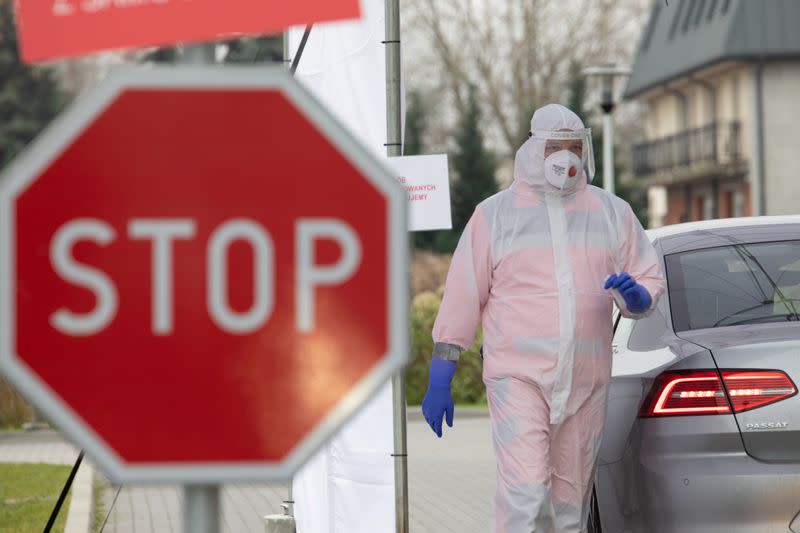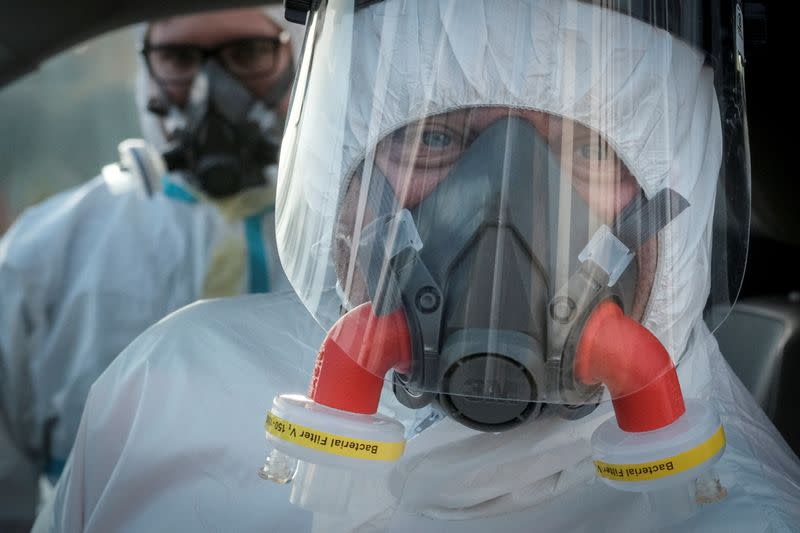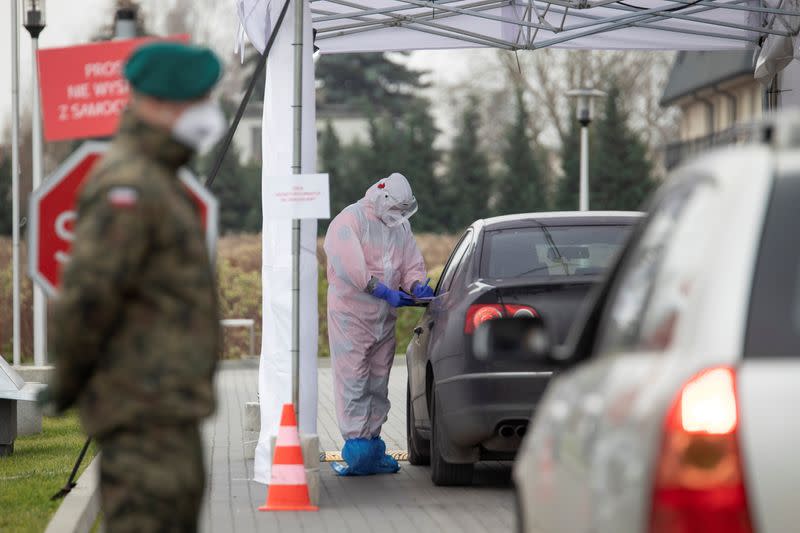Polish doctors fear high rate of positive COVID tests show pandemic worse than it appears
By Joanna Plucinska
WARSAW (Reuters) - Waldemar Witecki from the southwestern Polish town of Zagan was a healthy 64-year-old with no pre-existing conditions when he first developed a fever and chills around mid-October.
He was diagnosed with flu, even though he had come into contact with someone with COVID-19. He only got a test 10 days later, by which time he was critically ill. On Nov. 7, three weeks after first showing symptoms, he was dead.
Poland has one of the lowest testing rates in the European Union and one of the highest proportions of positive tests, which some doctors suggest means the pandemic may be far more widespread in the community than it appears.
To access a test you need to be showing symptoms and have a referral from a doctor. Poland's Health Ministry told Reuters doctors have become very good at detecting symptoms, resulting in the high number of positive cases.
However, critics say Poland's ruling conservative government was ill-prepared for the pandemic's second wave and the low number of tests is a symptom of underfunding and neglect.
Contact tracing is limited due to a lack of resources.
The World Health Organization (WHO) has said that resources permitting, people exposed to the coronavirus should be tested even if they do not show immediate symptoms of infection.
Witecki's daughter Kornelia Shehadie, 38, believes if her father had been tested sooner he would still be alive today.
His case also shows the difficulty of accessing a test, particularly outside big cities, she said.
"At the infection peak, testing centres were closing [in this area] because they weren't able to handle demand."
Poland's number of confirmed cases is approaching one million with 17,599 deaths.
"We are only seeing the tip of the iceberg," said Tomasz Imiela, a doctor and a member of the Regional Medical Chamber in Warsaw. "The real number of infections is many times larger than the actual data provided."
Doctors said many patients refuse to be referred to tests, fearing quarantine and losing their jobs, and some people with coronavirus symptoms opt to self-isolate instead of going through the hassle of seeking out a test.
According to the European Centre for Disease Prevention and Control, in the week ending Nov. 22, Poland, with a population of around 38 million, carried out 328,150 tests.
Denmark, with a population of under 6 million, carried out 503,544. Only Bulgaria had a lower testing rate per 100,000 people.
In the same week, Poland had the highest rate of positive tests in the European Union, at 46.4%.
Polish law requires that all positive test results are reported, but private laboratories and medics performing quick antigen tests were not required to report overall test numbers, which can push up the number of positives.
(This story was refiled to fix typo in second paragraph)
(Additional reporting by Anna Wlodarczak-Semczuk, Alan Charlish, Alicja Ptak and Kuba Stezycki; Editing by Alexandra Hudson)





